Related Research Articles

The 3rd century was the period from AD 201 to AD 300 (CCC) in accordance with the Julian calendar.

Year 271 (CCLXXI) was a common year starting on Sunday of the Julian calendar. At the time, it was known as the Year of the Consulship of Aurelianus and Bassus. The denomination 271 for this year has been used since the early medieval period, when the Anno Domini calendar era became the prevalent method in Europe for naming years.
The 240s decade ran from January 1, 240, to December 31, 249.
The 250s was a decade that ran from January 1, 250, to December 31, 259.
The 260s decade ran from January 1, 260, to December 31, 269.

Aurelian was a Roman emperor who reigned from 270 to 275 during the Crisis of the Third Century. As emperor, he won an unprecedented series of military victories which reunited the Roman Empire after it had nearly disintegrated under the pressure of barbarian invasions and internal revolts. Born in modest circumstances, most likely in Moesia Superior, he entered the Roman army in 235 and climbed up the ranks. He went on to lead the cavalry of the emperor Gallienus, until Gallienus' assassination in 268. Following that, Claudius Gothicus became emperor until his own death in 270. Claudius' brother Quintillus then ruled for three months, before Aurelian took the empire for himself.

Year 274 (CCLXXIV) was a common year starting on Thursday of the Julian calendar. At the time, it was known as the Year of the Consulship of Aurelianus and Capitolinus. The denomination 274 for this year has been used since the early medieval period, when the Anno Domini calendar era became the prevalent method in Europe for naming years.
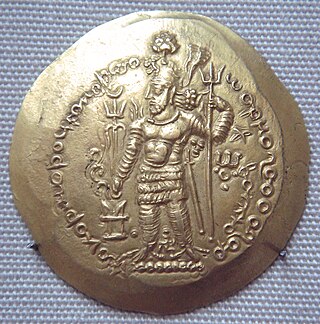
Year 272 (CCLXXII) was a leap year starting on Monday of the Julian calendar. At the time, it was known as the Year of the Consulship of Postumius and Veldumnianus. The denomination 272 for this year has been used since the early medieval period, when the Anno Domini calendar era became the prevalent method in Europe for naming years.
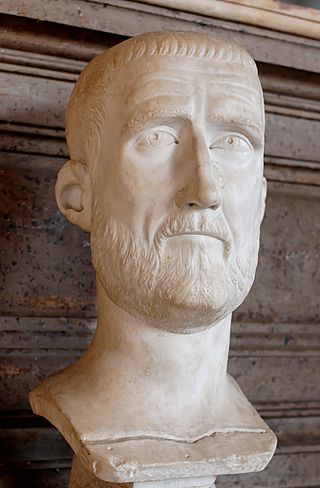
Year 276 (CCLXXVI) was a leap year starting on Saturday of the Julian calendar. At the time, it was known as the Year of the Consulship of Tacitus and Aemilianus. The denomination 276 for this year has been used since the early medieval period, when the Anno Domini calendar era became the prevalent method in Europe for naming years.
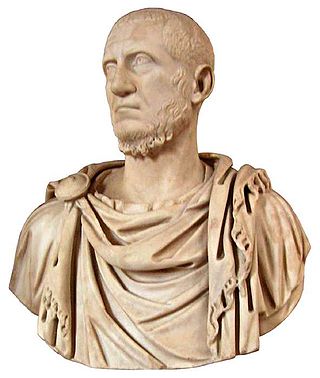
Year 275 (CCLXXV) was a common year starting on Friday of the Julian calendar. At the time, it was known as the Year of the Consulship of Aurelianus and Marcellinus. The denomination 275 for this year has been used since the early medieval period, when the Anno Domini calendar era became the prevalent method in Europe for naming years.
Year 270 (CCLXX) was a common year starting on Saturday of the Julian calendar. At the time, it was known as the Year of the Consulship of Antiochianus and Orfitus. The denomination 270 for this year has been used since the early medieval period, when the Anno Domini calendar era became the prevalent method in Europe for naming years.
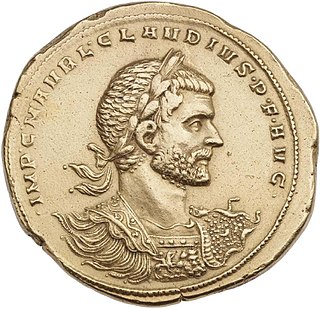
Marcus Aurelius Claudius "Gothicus", also known as Claudius II, was Roman emperor from 268 to 270. During his reign he fought successfully against the Alemanni and decisively defeated the Goths at the Battle of Naissus. He died after succumbing to a "pestilence", possibly the Plague of Cyprian that had ravaged the provinces of the Empire.

Marcus Aurelius Probus was Roman emperor from 276 to 282. Probus was an active and successful general as well as a conscientious administrator, and in his reign of six years he secured prosperity for the inner provinces while withstanding repeated invasions of barbarian tribes on almost every sector of the frontier.

The Gallic Empire or the Gallic Roman Empire are names used in modern historiography for a breakaway part of the Roman Empire that functioned de facto as a separate state from 260 to 274. It originated during the Crisis of the Third Century, when a series of Roman military leaders and aristocrats declared themselves emperors and took control of Gaul and adjacent provinces without attempting to conquer Italy or otherwise seize the central Roman administrative apparatus.

The Battle of Immae was fought in 272 between the Roman army of Emperor Aurelian, and the armies of the Palmyrene Empire, whose leader, Empress Zenobia, had usurped Roman control over the eastern provinces.

The Palmyrene Empire was a short-lived breakaway state from the Roman Empire resulting from the Crisis of the Third Century. Named after its capital city, Palmyra, it encompassed the Roman provinces of Syria Palaestina, Arabia Petraea, and Egypt, as well as large parts of Asia Minor.
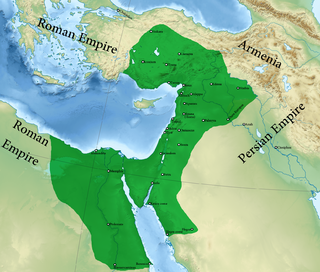
The Palmyrene invasion of Egypt occurred in the summer, or possibly in October, of 270 AD when the forces of Queen Zenobia of Palmyra, led by her general Zabdas and aided by an Egyptian general named Timagenes, invaded and subsequently annexed Egypt, which was under control of the Roman Empire at the time.
The Geopolitics of the Roman Empire deals with the "inalienable relationship between geography and politics of the Roman Empire". Once the Roman Empire had reached its natural borders, the location of potential threats to the empire and Roman troop locations played a major role in the elevation of Roman Emperors. Access to the troops, their location were crucial to the empire's internal politics, civil wars, and the eventual Fall of the Western Roman Empire.
References
- ↑ "List of Rulers of Korea". www.metmuseum.org. Retrieved 18 April 2019.
- ↑ Watson, Alaric. Aurelian and the Third Century. London, United Kingdom: Routledge, 1999, p. 50.
- ↑ Clauss, Manfred (2001). Die römischen Kaiser - 55 historische Portraits von Caesar bis Iustinian. p. 250. ISBN 978-3-406-47288-6.
- 1 2 "Saint Felix I | pope". Encyclopedia Britannica. Retrieved 24 May 2019.
- ↑ Zizhi Tongjian 1084, vol. 80: "[咸寧五年]冬,十一月,大舉伐吳"
- ↑ Knechtges, David R.; Chang, Taiping (2010). Ancient and Early Medieval Chinese Literature (vol.I): A Reference Guide, Part One. BRILL. p. 542. ISBN 9789004191273.
- ↑ "Quintillus | Roman emperor". Encyclopedia Britannica. Retrieved 25 March 2019.
- ↑ "Aurelian | Roman emperor". Encyclopedia Britannica. Retrieved 27 May 2019.
- ↑ Cruz, Juana Inés de la (2016). Sor Juana Inés de la Cruz: Selected Works (International Student Edition) (Norton Critical Editions). W. W. Norton & Company. p. 112. ISBN 9780393623406.